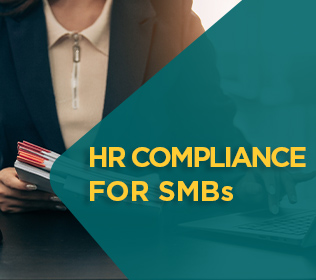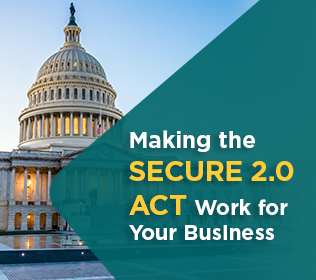
The Americans with Disabilities Act (ADA) was signed into law in July 1990. On the 25th anniversary of the law’s inception, New York Mayor Bill de Blasio declared July to be Disability Pride Month, celebrating the history of disability rights and marking the occasion with parades and festivities. The ADA prohibits discrimination against individuals with disabilities in and outside the workplace. As we honor Disability Pride Month, we should also recognize the changes workplaces can make to provide a more accessible space for everyone. Historically, the business world has been resistant to making these kinds of changes for fear that they will be expensive, but often they are simple and affordable. Further, the ADA requires business owners to make accommodations for employees with disabilities. It states, “As an employer, you are responsible under Title I of the ADA for making facilities accessible to qualified applicants and employees with disabilities as a reasonable accommodation, unless this would cause undue hardship.”
This July and throughout the year, celebrate Disability Pride Month by making changes in your office. Below are just a few suggestions of how you can make your workplace more accessible.
1. Ensure your office is accessible by removing barriers.
The first thing you should do is assess the physical accessibility of your workplace. If you only have stairs, individuals with disabilities may be unable to get to your office. This doesn’t just apply to people who use wheelchairs. Keep in mind that many disabilities are “invisible”, meaning that you may not be able to see that a person is disabled simply by looking at them. Someone may be able to walk short distances, but stairs could be challenging or impossible. Your employees and clients should be able to reach your office no matter their physical limitations.
The elevator, escalator, or another stair alternative should be easily found, not a service elevator that is only available if you ask for it. An individual unable to take the stairs should not have to disclose this information or seek out someone who can provide an alternative route for them. Everyone should be able to make a choice between the stairs or the elevator without qualifying why they did so. On this note, avoid motivational signs like, “today, we take the stairs!” While this may seem harmless encouragement to exercise more, this is disheartening and discriminatory towards people who cannot take the stairs.
2. Provide assisted listening devices and equipment to your employees.
You can provide many simple and affordable tools to your staff that will make working with a disability easier. Equipment like assisted listening devices, braille keyboards and signage, screen reader software, and more can help individuals with visual or hearing impairments. Additionally, providing adjustable desks to allow room for a wheelchair or other device is an inexpensive item that will make a huge difference to an individual who needs it. You may not know what equipment your employees need if they haven’t disclosed their disability to you. Try sending out an email letting everyone know that they can feel free to request the items they need to facilitate their work in the office. If possible, eliminate the doctor’s note requirement to request the equipment. If the accommodation is reasonable, do your best to make the request possible.
3. Offer remote work and flexible hours.
Remote work has become much more common in recent years, yet some offices are still resistant to offering remote work regularly. The increased availability of remote work not only caused people to have a healthier work-life balance but also vastly increased the amount of work available to individuals with disabilities. By offering remote work options, you are not only staying competitive in the current fast-paced job market but also opening up your talent pool to candidates who cannot commute due to physical impairments. Many people with disabilities struggle to find employment due to their physical limitations, despite having the skills and experience for the job. If your employees are productive and responsive, there is no real need to have them physically in the office.
Another great way to make your workplace more accessible is to offer flexible hours. This may not work for every role, but some responsibilities do not need to be done at a time of day when most of your office is also online. Some chronic disabilities may involve significant fatigue. It might be easier for such an individual to work some hours early in the morning, take a break to rest in the afternoon, and continue in the evening. Flexible hours may also be attractive to parents or caretakers of ill or elderly relatives. By opening your mind to alternative work schedules, you can provide an opportunity to someone with specific needs and gain a great new team member.
4. Provide a low-stim office space.
Many people struggle to work with too many distractions. For some, auditory or visual sensitivity can be extremely detrimental to their ability to concentrate. There are a few ways you can offer relief to individuals who can’t work with these disruptions. You can offer sound-canceling headphones so that anyone who wants a quiet space can escape from the noise. Avoid having a TV blaring in a workspace, as this can be very distracting. An office space with friendly employees who collaborate often is great, but this can also mean a lot of movement and talking which might be difficult for some team members.
Consider offering a quiet space for silent work, like an empty conference room. Another thing that can be very disruptive is bright fluorescent lighting. These can cause migraines and other visual impairments in many people. You can install dimmers on your office lighting, offer table lamps that provide a more tolerable light source, or provide a separate, darker space to work for those who desire it. These accommodations may seem foreign to those not sensitive to auditory or visual distractions. Still, for those who need them, they could be the difference between a miserable employee or one who is thriving.
The takeaway from these ideas is to show you how simple most of these accommodations are. Individuals with disabilities deserve a comfortable working environment, and the changes needed are often inexpensive and effortless. Disability Pride Month reminds us to be cognizant of those who are differently-abled and make all possible accommodations so that everyone has the same opportunities. If you would like additional advice on adapting your office for increased accessibility, reach out to your HRBP who will be happy to help. If you are not yet a client of PrestigePEO, our team of HR professionals is an invaluable resource for your daily business needs. Contact us today to learn more about partnering with us!




